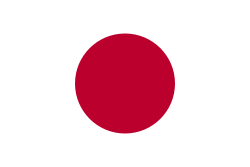Japan Unveils Advanced Railgun to Counter Hypersonic Missiles
 Japan
JapanIn a remarkable tale of foresight and collaboration, Masayoshi Son, the CEO of SoftBank, secured a groundbreaking distribution agreement for the iPhone in Japan three years before its official launch. This partnership with Apple’s Steve Jobs marked a pivotal moment in the tech industry.
Son, born in 1957, transformed SoftBank into a global tech investment powerhouse, becoming the world's largest venture investor with $1 trillion in assets over two decades. His notable investments include Alibaba and various Silicon Valley startups. However, in the early 2000s, he sought a game-changing product to enhance his mobile operations amid fierce competition from NTT Docomo.
The relationship between Son and Jobs began in the mid-1980s and flourished over the years, culminating in a pivotal meeting in 2005. During a visit to Apple, Son presented Jobs with his concept for a mobile-enabled iPod, leading to a gentleman's agreement whereby SoftBank would receive exclusive rights to distribute the iPhone in Japan once it was developed.
In March 2006, Son completed a $17 billion acquisition of Vodafone Japan, relying on Jobs' verbal assurance. Though Jobs did not finalize a written contract, he jokingly acknowledged Son's gamble.
After a tightly maintained secrecy surrounding the iPhone's development, Apple launched the product in the United States in 2007, but it was not immediately compatible with Japanese networks. Despite this, Son raced to capitalize on the opportunity, ultimately becoming the leading mobile operator in Japan and expanding SoftBank's market presence.
Son's successful negotiation with Jobs solidified SoftBank's position and paved the way for further acquisitions, including Sprint in 2013. As he continues to innovate in the tech field, Son now focuses on artificial intelligence, investing $500 million in OpenAI and exploring the development of groundbreaking AI devices.
 Japan
Japan Japan
Japan Japan
Japan